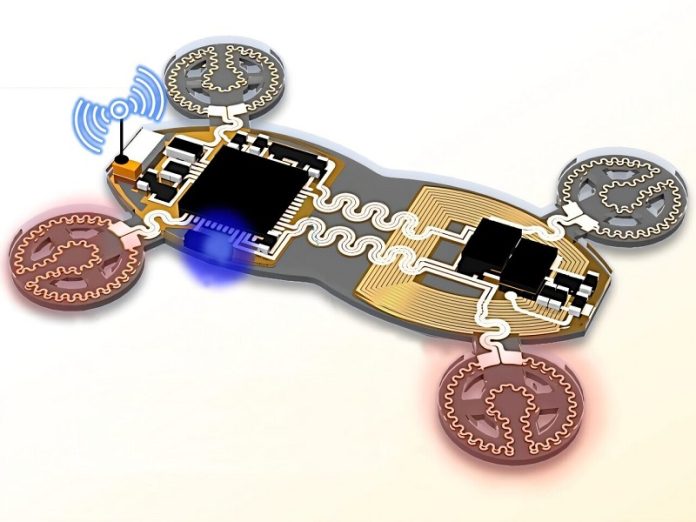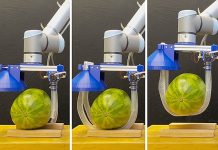
Imagine a tiny, squishy robot that can crawl through earthquake debris to find people trapped under rubble, or travel inside your body to deliver medicine exactly where it’s needed.
It might sound like science fiction, but scientists are getting closer to making it a reality.
A team of researchers led by Penn State University, along with international partners, has developed a new kind of soft robot.
Unlike traditional robots made from hard materials, these robots are soft and flexible, more like living creatures.
This flexibility makes them perfect for getting into small, tricky spaces—whether it’s the tight gaps between collapsed buildings or the winding paths inside the human body.
But building soft robots that are both flexible and smart has been a big challenge.
Usually, soft robots need to be controlled by people using outside devices, since it’s difficult to put sensors and electronics inside them without making them stiff.
Professor Huanyu “Larry” Cheng, who helped lead the study, said the hardest part was figuring out how to make the robots smart enough to move and respond on their own.
To solve this, the team created a design where flexible electronics are carefully spread out across the robot’s body.
This way, the electronics don’t interfere too much with the robot’s ability to bend, twist, and move.
They also made sure the electronics could still work properly, even when strong magnetic fields were used to control the robot’s motion.
The robots move thanks to tiny magnets built into their soft bodies.
When researchers use an external magnetic field—basically, a force created by a magnet—they can make the robots crawl, roll, or bend.
No wires or batteries are needed, which means the robots can move around in places where it’s hard to bring power.
To test the robots, the team filmed them moving through a simple course. In one scene, the robot rolls into a ball and crawls through narrow paths. These movements can be controlled from outside the body using a handheld magnet or electromagnetic device.
What makes these robots even more exciting is that they can include sensors that react to changes in their environment.
In search-and-rescue missions, for example, they could detect heat from a human body or sense obstacles. In medical situations, they might react to pressure, changes in pH, or even detect signs of disease—all without needing surgery.
The researchers are now working on shrinking the robot even more to fit inside a “robot pill.” This tiny device could be swallowed like a normal pill, then travel through the digestive system to take pictures, measure pH levels, or deliver medication directly to where it’s needed.
It could be a safer, less painful alternative to biopsies or invasive procedures.
In the future, these soft robots might also be used in blood vessels to treat heart conditions or deliver drugs to specific areas of the body.
While the team hasn’t picked an official name for their robot yet, they believe it could change the way we approach both disaster rescue and modern medicine.



